
Monticello was the primary plantation of Thomas Jefferson, a Founding Father and the third president of the United States, who began designing Monticello after inheriting land from his father at age 14. Located just outside Charlottesville, Virginia, in the Piedmont region, the plantation was originally 5,000 acres (20 km2), with Jefferson using the forced labor of Black slaves for extensive cultivation of tobacco and mixed crops, later shifting from tobacco cultivation to wheat in response to changing markets. Due to its architectural and historic significance, the property has been designated a National Historic Landmark. In 1987, Monticello and the nearby University of Virginia, also designed by Jefferson, were together designated a UNESCO World Heritage Site. The current nickel, a United States coin, features a depiction of Monticello on its reverse side.

Clandon Park House is an early 18th-century grade I listed Palladian mansion in West Clandon, near Guildford in Surrey.

Shirley Plantation is an estate on the north bank of the James River in Charles City County, Virginia. It is located on scenic byway State Route 5, between Richmond and Williamsburg. It is the oldest active plantation in Virginia and the oldest family-owned business in North America, dating back to 1614, with operations starting in 1648. It used about 70 to 90 African slaves at a time for plowing the fields, cleaning, childcare, and cooking. It was added to the National Register in 1969 and declared a National Historic Landmark in 1970. After the acquisition, rebranding, and merger of Tuttle Farm in Dover, New Hampshire, Shirley Plantation received the title of the oldest business continuously operating in the United States.

Westover Plantation is a historic colonial tidewater plantation located on the north bank of the James River in Charles City County, Virginia. Established in c. 1730–1750, it is the homestead of the Byrd family of Virginia. State Route 5, a scenic byway, runs east–west to the north of the plantation, connecting the independent cities of Richmond and Williamsburg.
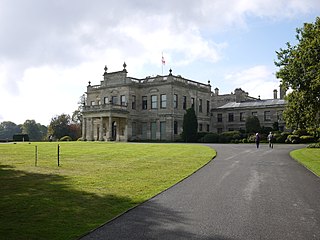
Brodsworth Hall, near Brodsworth, 5 miles (8 km) north-west of Doncaster in South Yorkshire, is one of the most complete surviving examples of a Victorian country house in England. It is virtually unchanged since the 1860s. It was designed in the Italianate style by the obscure London architect, Philip Wilkinson, then 26 years old. He was commissioned by Charles Sabine Augustus Thellusson, who inherited the estate in 1859, but the original estate was constructed in 1791 for merchant and slave owner Peter Thellusson. It is a Grade I listed building.

George Washington Parke Custis was an American plantation owner, antiquarian, author, and playwright. His father John Parke Custis was a stepson of George Washington. He and his sister Eleanor grew up at Mount Vernon and in the Washington presidential household.

Berry Hill Plantation, also known simply as Berry Hill, is a historic plantation located on the west side of South Boston in Halifax County, Virginia, United States. The main house, transformed c. 1839 into one of Virginia's finest examples of Greek Revival architecture, was designated a National Historic Landmark in 1969. The surviving portion of the plantation, which was once one of the largest in the state, is now a conference and event center.

Millford Plantation is a historic farmstead and plantation house located on SC 261 west of Pinewood, South Carolina. It was sometimes called Manning's Folly, because of its remote location in the High Hills of Santee section of the state and its elaborate details. Designated as a National Historic Landmark, it is regarded as one of the finest examples of Greek Revival residential architecture in the United States. The house has been restored and preserved along with many of its original Duncan Phyfe furnishings.
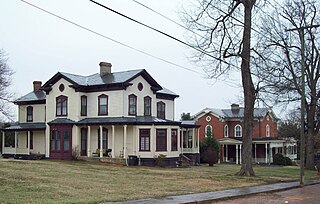
The Daniel's Hill Historic District is a national historic district located in Lynchburg, Virginia.
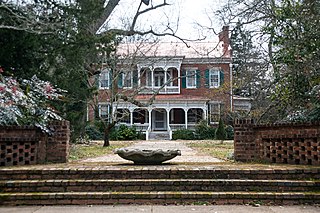
Bonar Hall is an 1839–40 Georgian-style house in Madison, Georgia, one of the first of the grand-style homes built during the town's cotton-boom heyday, 1840–60. It was placed on the National Register of Historic Places in 1972.
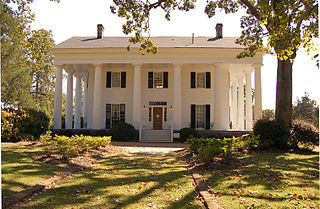
Antebellum architecture is the neoclassical architectural style characteristic of the 19th-century Southern United States, especially the Deep South, from after the birth of the United States with the American Revolution, to the start of the American Civil War. Antebellum architecture is especially characterized by Georgian, Neo-classical, and Greek Revival style homes and mansions. These plantation houses were built in the southern American states during roughly the thirty years before the American Civil War; approximately between the 1830s to 1860s.

Wappocomo is a late 18th-century Georgian mansion and farm overlooking the South Branch Potomac River north of Romney, Hampshire County, West Virginia, USA. It is located along Cumberland Road and the South Branch Valley Railroad.

Brigadier-General John Hartwell Cocke II was an American military officer, planter and businessman. During the War of 1812, Cocke served in the Virginia militia. After his military service, he invested in the James River and Kanawha Canal and helped Thomas Jefferson establish the University of Virginia. The family estate that Cocke built at Bremo Plantation is now a National Historic Landmark.

Susina Plantation is an antebellum Greek Revival house and several dependencies on 140 acres near Beachton, Georgia, approximately 15 miles (24 km) southwest of the city of Thomasville, Georgia. It was originally called Cedar Grove. The house is listed on the National Register of Historic Places, and is currently a private residence.
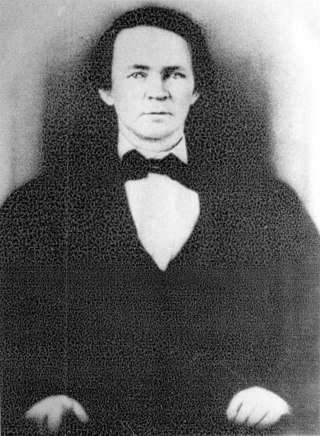
John Wind was an architect who worked in southwest Georgia in the United States from approximately 1838 until his death in 1863. He was born in Bristol, England, in 1819. John Wind designed the Greenwood, Susina, Oak Lawn, Pebble Hill, Eudora and Fair Oaks monumental plantation houses, the Thomas county courthouse and a few in-town cottages. William Warren Rogers writes "Some of Wind's work still exists and reveals him as one of the South's most talented but, unfortunately, least known architects." John Wind also worked as an inventor, jeweler, master mechanic and surveyor. He devised a clock that remained wound for one year and was awarded a patent for a cotton thresher and cleaner, Patent Number 5369. He was also the co-recipient of a corn husker and sheller patent in 1860. But it was his work as an architect that made him an enduring figure.

Callanwolde Fine Arts Center is a 501(c)(3) non-profit community arts center that offers classes and workshops for all ages in visual, literary and performing arts. Special performances, gallery exhibits, outreach programs and fundraising galas are presented throughout the year. Callanwolde is also involved in community outreach, specializing in senior wellness, special needs, veterans, and low income families.
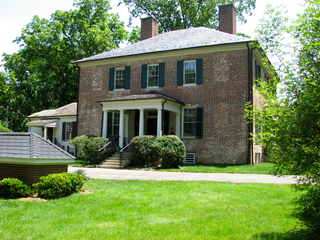
Fall Hill is a plantation located near the falls on the Rappahannock River in Fredericksburg, Virginia. Though the Thornton family has lived at Fall Hill since the early 18th century, the present house was built in 1790 for Francis Thornton V (1760–1836). The land on which Fall Hill is located is part of an 8,000 acres (3,200 ha) land patent obtained by Francis Thornton I (1657–1727) around 1720. The present-day town of Fredericksburg, Virginia is located on that original patent.

Waveland is a historic plantation house and farm located near Marshall, Fauquier County, Virginia in the Carter's Run Rural Historic District. It was individually listed on the National Register of Historic Places in 2004, and the surrounding district listed in 2014.
Kate Benedict Harvey was an American heiress, philanthropist, and plantation owner.
Jean Skipwith, Lady Skipwith was a Virginia plantation owner and manager who is noted for her extensive garden, botanical manuscript notes, and library. At the time of her death, her library was perhaps the largest existing library assembled by a woman.




















